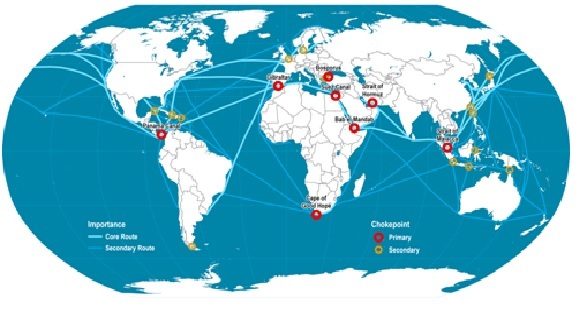By Ehsanullah Zirak
The 21st century is well-known for Asia and named as an Asian century due to the geopolitical transformation in world politics. William H. Overholt in his book “Asia, America and the Transformation of Geopolitics” points out: “American security and prosperity now depend on Asia.” It means that Asian containment has strategic importance for the USA. From one side, the world’s strongest economies, such as Japan, China, and India do exist in Asia. On the other side, the greatest security threats and challenges have come from Asia to the USA. Out of them, we can point out to Al-Qaeda Network, ISIS, and terrorism as a whole, also atomic powers including North-Korea, India, China, Russia, and Pakistan are in this geography.
Besides, the Middle East which its major part does exist in Asia is very crucial for the USA both economically and geopolitically. Because, from one hand this region is home to the world’s most important natural resources, especially fossil fuels. On the other hand, according to Global Security Organization’s analysis out of eight international strategic points, four of them are located in Asia. Which from both economically – trade and from the military perspective are very crucial for the USA and the rest of the world, one of them is the Middle East.
Based on Truman’s Doctrine in Asia, as elsewhere; both military protection and economic development are the essential elements for the victory of the USA and achieving its long-term goals. These aspects of Truman’s Doctrine are definitely visible in the United States Strategy for Central Asia 2019-2025: Advancing Sovereignty and Economic Prosperity. The goals of this strategy are as the following; to:
1) Support and strengthen the sovereignty and independence of the Central Asian States, individually and as a region;
2) Reduce terrorist threats in Central Asia;
3) Expand and maintain support for stability in Afghanistan;
4) Encourage connectivity between Central Asia and Afghanistan;
5) Promote the rule of law reform and respect for human rights, and
6) Promote United States investment in and development of Central Asia.
These goals are very crucial for the US due to the direct contribution of a stable and secure Central Asia in U.S. efforts to counter terrorism, support regional stability, promote energy security, and enhance economic prosperity in the region and beyond.
Afghanistan is located in the heart of every U.S. strategy for Central Asia, South Asia, and the Middle East, thus, America’s long-term goals in Asia are achievable through Afghanistan. Due to the existence of various extremist-terrorist groups, war and terrorism potential, and the geopolitical location of Afghanistan between Central Asia and South Asia, also among Central Asia, South Asia, and the Middle East.
U.S special representative Mr.Zalmy Khalilzad recent efforts show that the USA through multilateral diplomacy wants to manage the conflict of interest of great powers and regional powers in Afghanistan, as he recently asked Taliban to directly negotiate with India regarding India’s concerns on terrorism, also Taliban’s demands from India in the reconsolidation process of Afghanistan.
As a result, we can say that Asia is very important for the USA strategically, and Trump’s administration’s new strategy for both South-Asia and Central Asia indicates that America is going to bring peace and stability to Afghanistan and the whole region. But peace and stability cannot be concluded in a peace deal with the Taliban, because the current ongoing conflict in Afghanistan and the region has more other aspects and root causes, that paying very close attention is needed for.
 Afghanistan Times Latest News and Analysis from Afghanistan and the Region
Afghanistan Times Latest News and Analysis from Afghanistan and the Region




